When it comes to recording a smartphone video, many of us are in the habit of simply aiming and shooting. The results may be good enough for personal use. However, for professional-grade smartphone videos—useful for testimonials, product demonstrations, employee spotlights, or other marketing applications—learn how to up your game.
Plan Ahead
Outline the video’s key points before jumping right into recording.
- Make sure there’s a compelling story, easy-to-follow blueprint, and meaningful information.
- Draft a shot list. What scenes do you want to capture? Do you need any props for staging?
- Plan to shoot b-roll, supplemental or alternative footage, for additional editing material.
- Scout your location for any distracting background noise or activity. Plan around any that you cannot eliminate.
- Ask your speaker to wear brand-appropriate attire for filming. Avoid clothing with prominent logos unless you intend to endorse that brand.
- Cue the viewer. The script should begin with the speakers introducing themselves and what they're going to be talking about.
- Lead with your key message. Plan for an attention-grabbing opening scene and get to the point quickly.
- Tell them. Show them. Then tell them again. Structure the video so that the main points are reinforced.
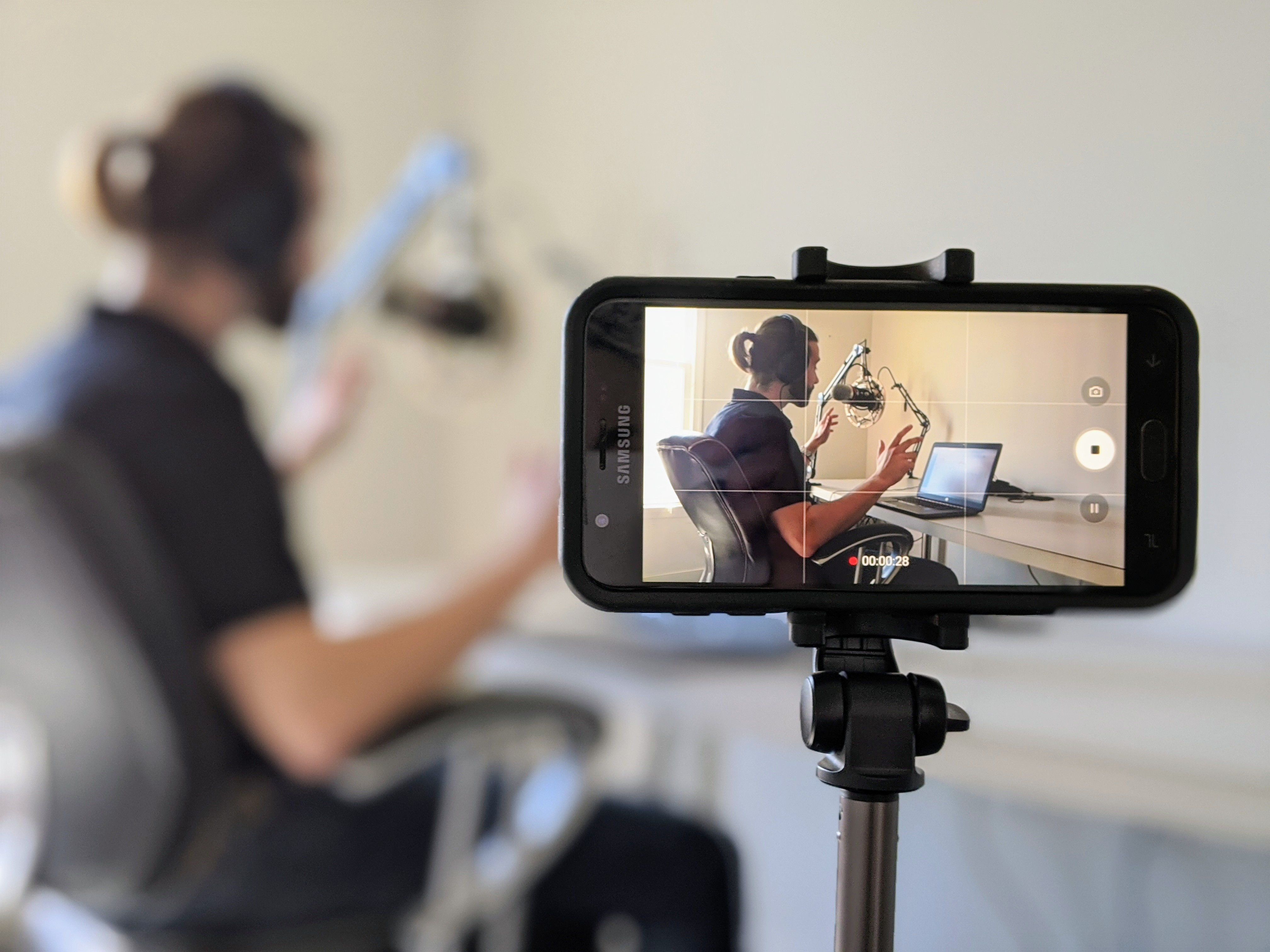
Prep Your Smartphone
Smartphones are powerful but can benefit from tweaking to reach their full potential.
- Put your phone in airplane mode to prevent interruptions. Shut down background apps.
- Clean your camera lens. It’s quick and easy!
- Record in wide-angle.
- Set video quality to full HD.
- Turn on video stabilization settings.
- Use the grid in your camera app to ensure you're recording straight videos.
Frame and Focus
The right perspective and focal point direct the viewer’s eye. Without proper framing, your smartphone video won’t make it off the ground.
Frame Your Shot
- Center your subject or use the rule of thirds.
- Look carefully for anything that could be amiss in your frame, such as a busy background or crooked props.
- Unless setting up for a macro close-up, don't frame the shot too tight. Keep in mind how the video could be cropped for social media posts. Make sure there's "breathing room" that the video editor can play with.
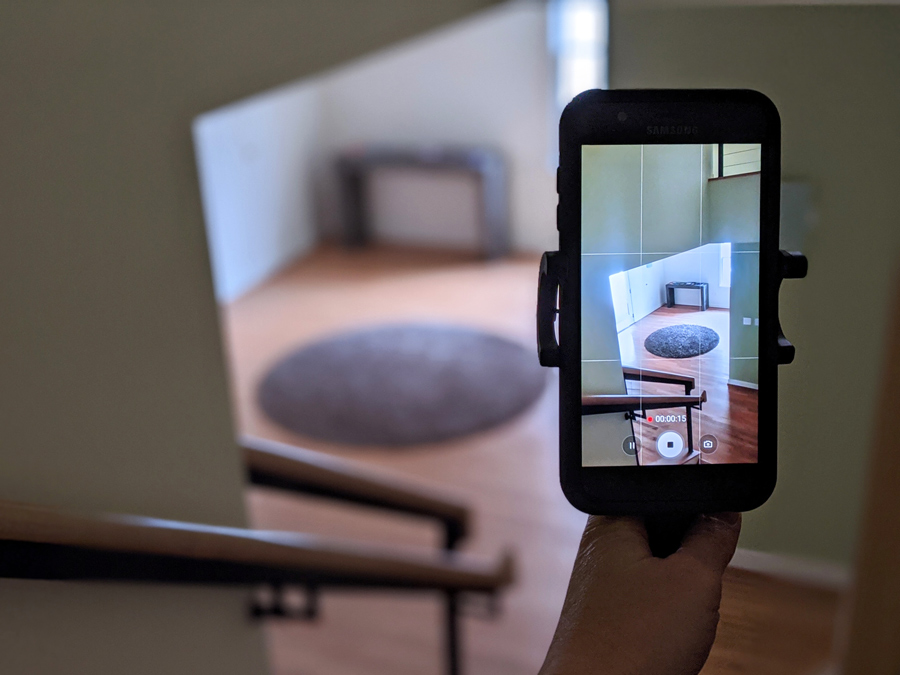
Stabilize the Camera
Use a tripod or place your camera on a stable surface for best results. If you must film handheld:
- Keep the phone close to your body.
- Rest your elbows on a nearby object for stability.
- Use your body to absorb bounces and shakes.
- Enable the phone’s video stabilization setting, if available.
- Choose the 16:9 ratio setting over 4:3
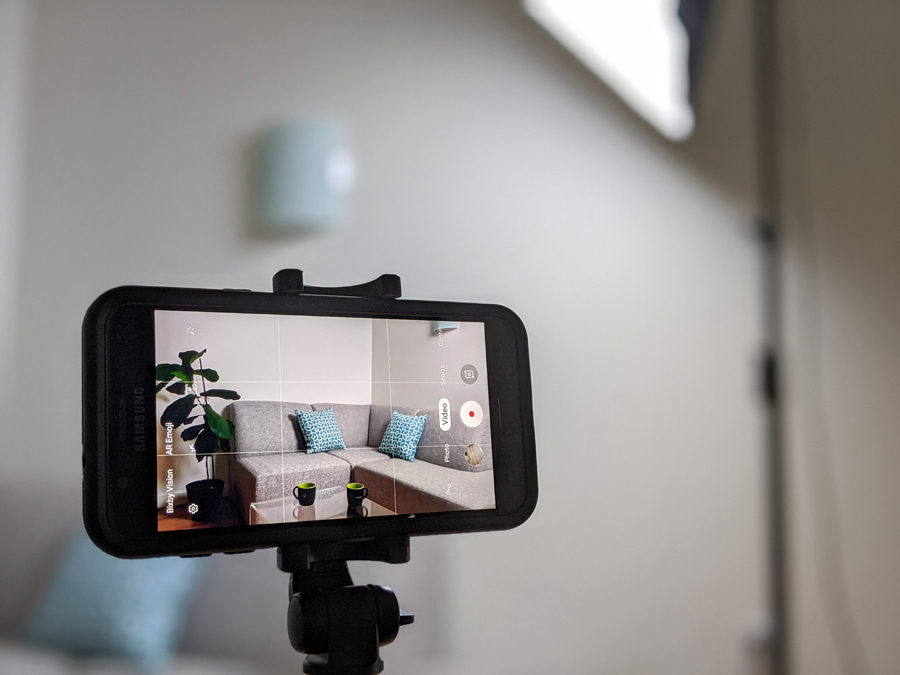
Check Lighting and Focus
- Use good lighting. Take advantage of natural light whenever possible, but avoid overly bright, direct light. Direct sunlight creates shadows on the face. Cloudier skies result in a softer, more pleasant light. Supplement with a lighting kit as needed.
- Consider a slight angle. Rather than a straight-on shot, shift your vantage a few degrees to your left or right.
- Record in landscape as a default.
- Record in portrait only for story posts (Facebook, Instagram, Snapchat).
- Continually check your framing and focus while shooting. Keep your eye on the camera, not the scene.
- Never use the zoom feature. Instead, move the phone closer to the subject. Most smartphone cameras don’t have true optical zoom, only digital zoom, which magnifies the existing pixels without extra clarity.
- Use the exposure lock. Activate the Auto Exposure/Auto Focus (AE/AF) lock by tapping on the screen and holding it until the AE/AF box appears. Once it does, the focus is locked, and you can adjust the exposure by dragging your finger up and down. This keeps the video looking consistently sharp and prevents the phone from making choppy adjustments.
- Avoid too much movement. If you do have to move, panning across a scene for example, make it subtle. Move very slowly so the camera has enough time to focus on each scene as you move.
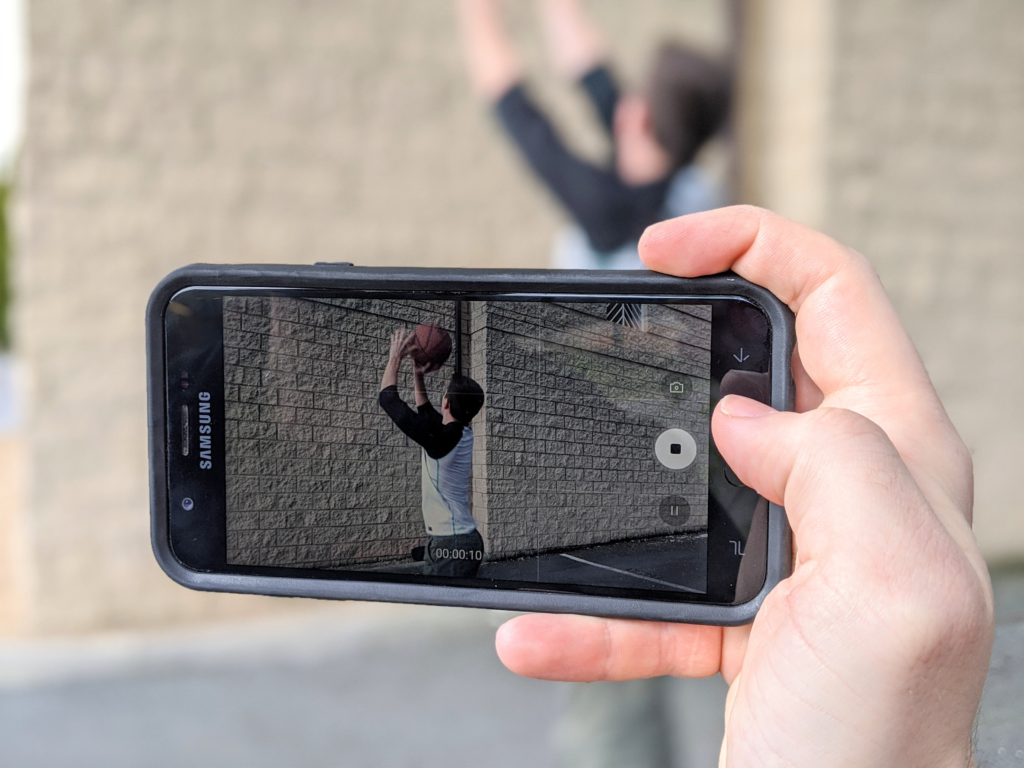
Capture the Content
At the end of the day, none of the above matters without great content! Audio, number of takes, and variety are all important considerations in a marketing video.
- Use an auxiliary microphone for recording audio, and make sure it's as close as possible to the speaker.
- Have the speaker always face the camera when speaking.
- Shoot as much footage as reasonable. Make it the video producer's problem to edit down to a concise, engaging video.
- Get as many takes from the speaker as necessary. If the speaker trails off or muffs a line, make sure you have at least one clip with clear flow and a beginning and ending cadence.
- Vary the perspective: Consider making a video edited from several short clips with different perspectives, rather than from a single clip.
- Consider time-lapse and slow-motion features if there’s room to stretch your creative muscles.
- End with a call to action!
After planning the concept, optimizing your phone’s potential, and crisply capturing the content, you’ll have a dazzling array of video material. You can get even more mileage out of your content by repackaging and reframing for different platforms!
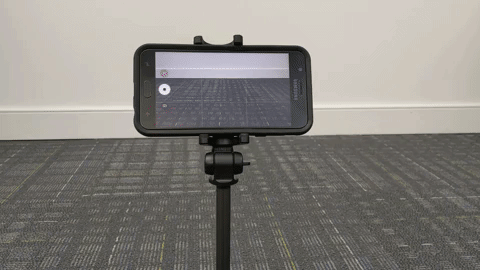
Category: Marketing, Social Media
Tags: budget, multimedia, social media, technology
